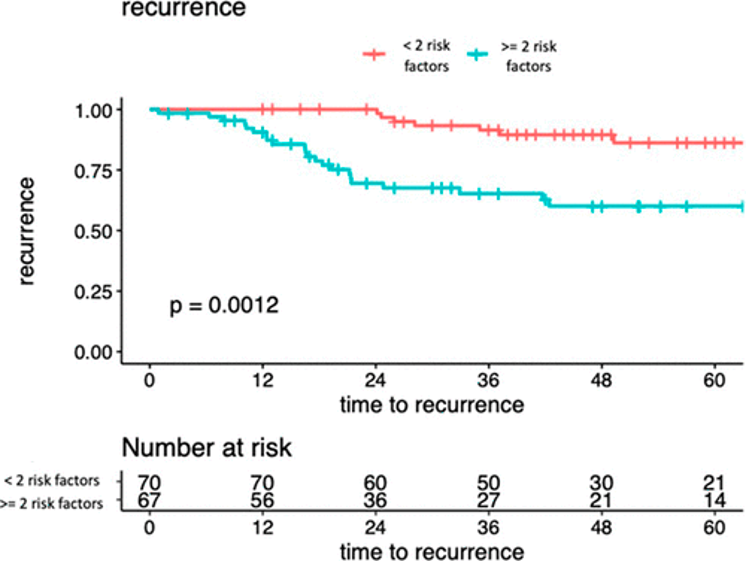(UroToday.com) The 2024 American Urological Association (AUA) annual meeting featured a session on non-invasive bladder cancer, and a presentation by Dr. Giulio Avesani discussing long-term outcomes of low and intermediate-risk bladder cancer patients treated with transurethral resection eligible for active surveillance.
Active surveillance has been recently proposed as an alternative to TURBT for low-risk and intermediate-risk non-muscle invasive bladder cancer patients. As such, Dr. Avesani and colleagues evaluated the oncological outcomes of patients deemed eligible for active surveillance according to IBCG criteria that underwent TURBT.
This study retrospectively analyzed data of 280 low-risk and intermediate-risk non-muscle invasive bladder cancers according to the international bladder cancer group (IBCG) definition treated with TURBT and subsequent mitomycin C or BCG intravesical instillation from 2010 to 2022 at a tertiary referral center. Active surveillance criteria were defined as follows:
- ≤5 lesions
- No gross hematuria
- Negative urinary cytology
- Size ≤1 cm
The investigators divided patients according to additional IBCG risk factors:
- Highly recurrent tumor (>1/year)
- Multifocality (>1 lesion)
- Prior intravesical treatment failure
Early recurrence (≥1 within 1 year)
Stratification was defined as <2 and ≥2 risk factors. A Kaplan-Meier curve analysis depicted the 48-month recurrence-free survival. To assess whether increasing risk factors may increase the risk of recurrence, they also performed a multivariable Cox regression analysis adjusted for adequate intravesical treatment.
A total of 137 patients were selected according to inclusion criteria, with a median age was 70 years (IQR 62-76). The complete patient characteristics are as follows:
During a median follow-up of 45 months (IQR 28-56), 48 (35%) patients recurred and 4 (3%) patients experienced progression (all with two risk factors). There were 131 Ta tumors (96%) and 112 (82%) patients had low-grade/G2 tumors. Four-year recurrence-free survival rates were 90% and 60% for patients harboring <2 and ≥2 risk factors, respectively (p = 0.0012):
At a landmark time point of 48 months follow up, having ≥2 risk factors was an independent predictor of recurrence (HR 3.42, 95%CI 1.15-8.32, p = 0.028), whereas adequate therapy was not predictive (HR 0.73, 95% CI 0.25-2.10, p = 0.60):
Dr. Avesani concluded his presentation discussing long-term outcomes of low and intermediate-risk bladder cancer patients treated with transurethral resection eligible for active surveillance with the following take-home messages:
- Active surveillance is a feasible strategy for IBCG-low-risk and intermediate-risk patients with negative cytology, less than 5 lesions, no gross hematuria, and size ≤1 cm
- Because of the higher rate of recurrence and progression, careful assessment is needed in patients with ≥2 risk IBCG factors during active surveillance protocol enrollment
Presented by: Giulio Avesani, Urological Research Institute, IRCCS San Raffaele, Milan, Italy
Written by: Zachary Klaassen, MD, MSc - Urologic Oncologist, Associate Professor of Urology, Georgia Cancer Center, Wellstar MCG Health, @zklaassen_md on Twitter during the 2024 American Urological Association (AUA) Annual Meeting, San Antonio, TX, Fri, May 3 - Mon, May 6, 2024.


